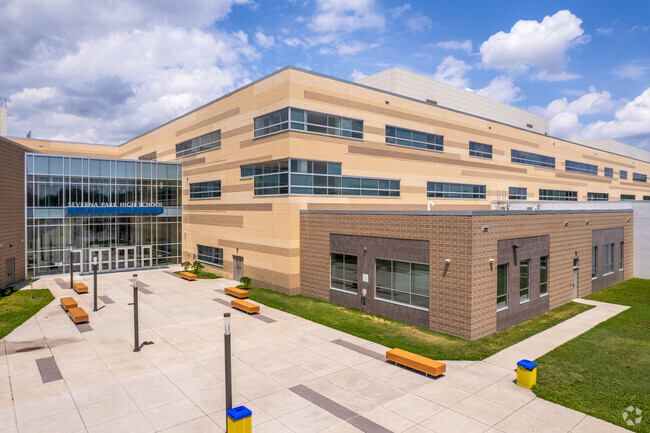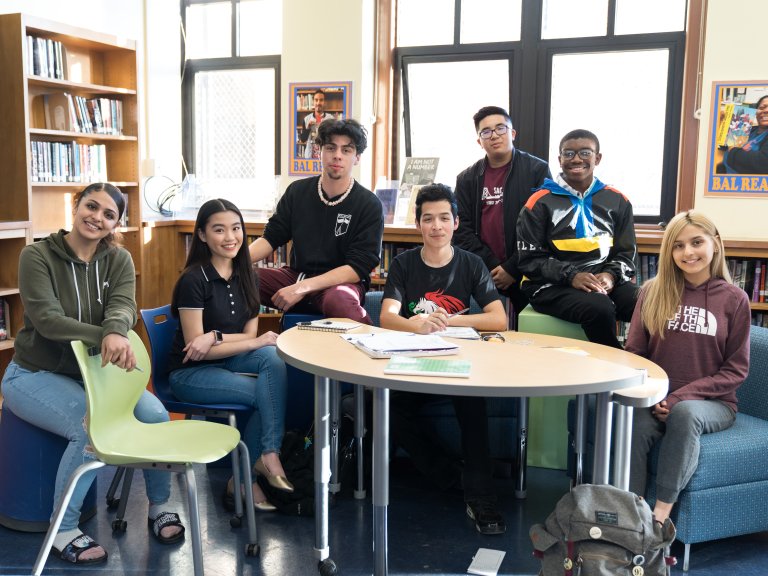The Importance of Local Support to Save Temecula Schools Today
The Importance of Local Support to Save Temecula Schools Today
Blog Article
The Influence of Institution Environments on Academic Success and Personal Wellness
The style of educational spaces, consisting of natural illumination and ergonomic furnishings, can enhance students' concentration and convenience. Just how can institutions strategically enhance these aspects to much better sustain their students?
Physical Design and Style
Just how does the physical design and style of a school effect scholastic success? The arrangement and aesthetic of an institution environment can significantly affect students' understanding outcomes. A well-designed institution format advertises simplicity of activity, decreases disturbances, and fosters a feeling of safety and security and belonging. As an example, vast hallways and plainly significant locations promote smooth shifts between courses, lessening lateness and disruption. Furthermore, strategically put usual locations encourage social communications, which are essential for social and psychological development.
Natural lights and effective air flow systems are pivotal in enhancing cognitive function and reducing absence. Studies have revealed that classrooms with ample all-natural light improve student concentration and decrease feelings of sleepiness. Additionally, ergonomic furnishings customized to trainees' demands can protect against physical discomfort, allowing for prolonged emphasis and interaction in scholastic activities.
Accessibility to exterior rooms and visually pleasing surroundings also play a vital function - Save Temecula Schools. Green spaces and well-maintained school grounds supply chances for workout and psychological leisure, both of which are essential for maintaining high degrees of scholastic efficiency. Basically, a thoughtfully developed physical setting can act as a catalyst for scholastic excellence, promoting an atmosphere that sustains both mentor and discovering
Classroom Atmosphere
A positive class ambience is fundamental to achieving academic success. A setting that promotes a feeling of safety and security, inclusivity, and mutual respect motivates pupils to involve more proactively in their learning processes. The ambiance of a classroom, consisting of aspects such as illumination, sound levels, and seating arrangements, can significantly influence trainee focus and motivation. A well-ventilated, well-lit class with marginal diversions can enhance cognitive function and reduce tension, thus promoting far better academic outcomes.
Additionally, the classroom environment ought to sustain a society of cooperation and open communication. They are much more most likely to involve deeply with the material and develop important assuming abilities when pupils really feel comfortable expressing their ideas and asking questions. Peer communications and group tasks can enhance knowing by giving diverse perspectives and fostering team effort
In addition, developing constant routines and clear expectations can produce an organized setting that enables students to focus on their research studies. By reducing unpredictability and offering a foreseeable structure, pupils can much better handle their time and duties. Inevitably, a positive classroom environment not just enhances academic efficiency yet also adds to the general well-being of students, preparing them for future instructional and individual undertakings.
Teacher-Student Relationships
Building on the relevance of a positive class atmosphere, the connections in between instructors and students play a crucial function in forming scholastic success. A healthy teacher-student connection cultivates a learning setting where pupils feel valued, understood, and sustained, which considerably improves their motivation and involvement. When students regard their instructors as friendly and understanding, they are extra likely to get involved actively in class and look for aid when required, adding to a much deeper understanding of the read the full info here subject issue.

This trust enables pupils to share their concepts and problems easily, fostering a collective discovering atmosphere. In essence, strong teacher-student relationships are a keystone of academic success, playing an essential duty in both scholastic accomplishment and individual advancement.
Peer Interactions
Peer communications substantially influence scholastic success by shaping a student's cognitive and social advancement. Favorable peer communications can boost a student's motivation and interaction in academic tasks through joint understanding and common assistance.

Reliable peer interactions additionally contribute to the development of vital life abilities, such as dispute, interaction, and participation resolution. These social competencies are important for both scholastic success and personal wellness, emphasizing the value of promoting favorable peer dynamics within the college environment.
Extracurricular Tasks
Engaging in extracurricular tasks plays a pivotal duty in a pupil's scholastic success and personal growth. Study constantly indicates that pupils that participate in extracurricular activities have a tendency to attain higher academic efficiency.
In addition, extracurricular participation fosters a feeling of belonging and area, which is crucial for personal health. Taking part in group activities permits students to develop and strengthen social networks, boosting their emotional and social knowledge. These interactions are vital for developing interpersonal skills that are advantageous in both future and academic professional environments.
In addition, after-school activities offer a positive electrical outlet for trainees to explore their interests and passions beyond the standard educational program. This exploration can bring about the exploration of new skills and prospective job courses, further motivating look at this website trainees to involve even more deeply in their academic job. Finally, the role of extracurricular tasks expands beyond plain recreation; they are important to promoting a holistic academic experience that advertises both scholastic success and individual growth.
Final Thought
In amount, the influence of institution settings on both academic success and personal well-being is profound. Attentively developed physical designs and classrooms, in addition to favorable teacher-student relationships and constructive peer interactions, substantially enhance student inspiration and engagement. Furthermore, the presence of helpful teachers can minimize stress, fostering a nurturing ambience conducive to all natural development. These components collectively highlight the importance of creating and keeping optimal school settings for the benefit of trainees' personal and scholastic development.
Eventually, a positive class environment not only boosts academic performance however likewise adds to the total well-being of trainees, preparing them for future instructional and personal undertakings.

Report this page